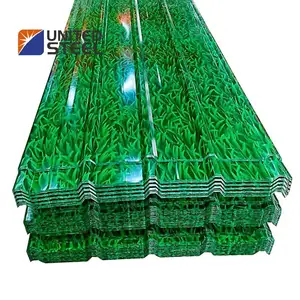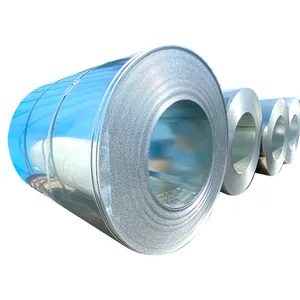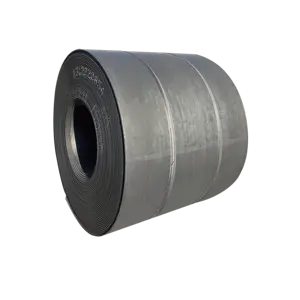Popular in your industry









































































Top categories
About steel round tubing
Introduction
In the dynamic world of modern construction, materials must be robust, versatile, and cost-effective. One such material that stands out is steel round tubing. This article delves into the intricacies of steel round tubing, exploring its types, benefits, and applications in contemporary construction. From its exceptional strength and durability to its adaptability and cost-effectiveness, steel round tubing is a compelling choice for a variety of construction needs. We also touch on its sustainability and the future trends in its usage, providing a comprehensive understanding of this versatile material.
Understanding Steel Round Tubing
Steel round tubing comes in various diameters, wall thicknesses, and lengths. There are two main types: seamless and welded. Seamless tubes are made by piercing and rotating a heated solid metal bar, offering competitive costs due to high metal displacement. They come in hot finished and cold drawn variants, each with unique properties. Welded tubes, on the other hand, are formed from a coil and then welded. They include ERW and DOM types, each with specific applications and benefits. The manufacturing process can affect the tube's hardness, surface quality, and mechanical properties.
Benefits of Using Steel Round Tubing in Construction
Steel tubing and pipes are naturally strong, especially against longitudinal stress, making them the first choice for a range of applications. They are not solid cylinders of metal, but have an aperture running their full length, making them an excellent option to protect cables or carry water and other fluids. Despite their strength, steel pipes and tubing can be lighter than solid structural steel, where total weight is a concern.
Durability and Strength
Steel round tubing offers exceptional durability and strength. These materials are steel alloys, with a wide range of options for composition, including alloying elements like chromium and molybdenum. The steel round tubes are very weldable and form/bend easily, contributing to their overall strength and durability.
Versatility and Adaptability
Steel round tubing is incredibly versatile and adaptable, making it a popular choice for various applications. Its structural qualities make it ideal for use in everything from race car roll cages and high-pressure gas lines to building structures. This material is impressively strong, able to carry its weight as part of a structure, and can even halt an out-of-control vehicle when used as a bollard. Its adaptability extends to handrails, roadside safety rails, and fencing, addressing a wide range of construction needs.
Cost-Effectiveness
While square tubing tends to be easier to work with, round tubing has two main advantages: cost and weight. A 1-inch diameter round tube uses less metal than a 1-inch-wide square tube. Because it uses less metal, a 1-foot section of round tube will weigh less than a 1-foot section of square tube. Less raw material also means a lower price tag, so round tubing is often the ideal choice when cost is a concern and you don’t need the advantages of square tubing.
Sustainability
Steel round tubing is a sustainable choice for modern construction. Its efficient design reduces environmental impact by minimizing the mass of structures. The hollow sections are more efficient than open sections, reducing the need for protective coatings. Moreover, up to 50% of the steel weight can be saved in certain steelwork elements, resulting in an instant 50% saving in embodied emissions. The steel is also recyclable and reusable, contributing to the circular economy and reducing the need for primary steel-making in the future.
Applications of Steel Round Tubing in Modern Construction
Steel round tubing is widely used in modern construction due to its strength and versatility. It's a popular choice for structural frameworks, providing robust support for buildings. In plumbing and HVAC systems, steel tubes transport water, gases, and wastes efficiently. Additionally, their aesthetic appeal makes them ideal for architectural design elements, such as stairways and railings. Steel tubing also helps reduce gas leaks, enhancing the safety of buildings.
Structural Framework
Steel round tubing is a standard specification for cold-formed welded structural tubing. It's commonly used in structural applications and general construction due to its superior strength, closer tolerances, and excellent finish. The manufacturing process involves a roller system and electric-resistance welding, ensuring the structural design strength of the tubing section.
Plumbing and HVAC Systems
Steel pipes play a crucial role in HVAC systems, facilitating the transfer of thermal energy for heating, ventilation, and air-conditioning. They are also integral to refrigeration systems, carrying refrigerant fluids that absorb unwanted heat. Steel's rigidity, flexibility, and resistance to thermal expansion make it an ideal choice for these applications. Moreover, its durability ensures that it can withstand pressure changes and erosion, reducing the need for frequent replacements.
Architectural Design Elements
Steel round tubing provides aesthetic and structural advantages over conventional round tubing. Their shaped tubing is used in iconic structures, individual properties, and communal buildings. For instance, oval tubing has been used in various famous structures and buildings. They also provide balustrading for balconies and terraces of all specifications. The tubing solutions are both ergonomically viable and aesthetically pleasing, making them ideal for various architectural applications.
Future Trends in the Use of Steel Round Tubing
New uses are being found for steel tube every day, and as innovators develop ways to incorporate it in products and inventions, our lives are improved in many ways – some small, and others monumental. As custom fabricators, we are always willing to work within our clients’ specifications in order to bring their vision to life and create just one more incredible use for steel tube.
Conclusion
Steel round tubing has proven to be an indispensable material in modern construction, offering a unique blend of strength, versatility, and cost-effectiveness. Its applications range from structural frameworks and HVAC systems to architectural design elements, demonstrating its adaptability. The sustainability of steel round tubing, particularly in reducing emissions and contributing to the circular economy, underscores its value in a world increasingly conscious of environmental impact. As we look to the future, the potential for new uses and innovations in the application of steel round tubing is vast, promising to further enhance our built environment.













